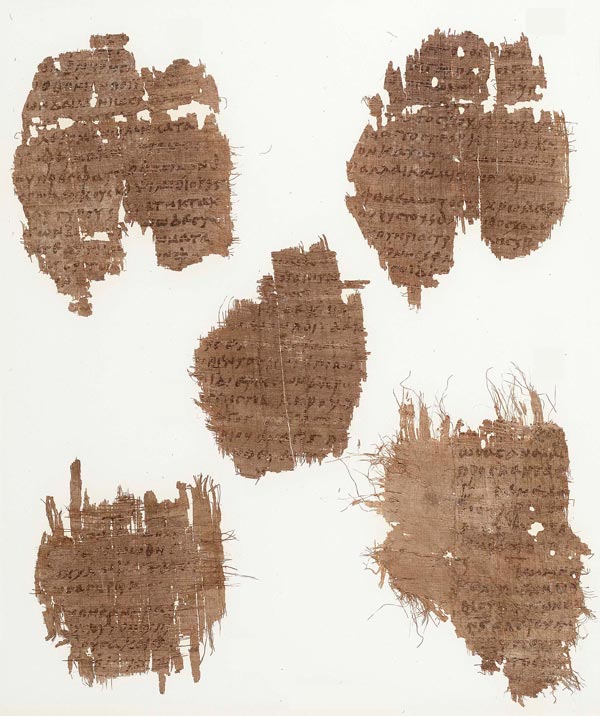On display are five out of thirteen extant papyrus fragments, which represent thirteen leaves or twenty-six pages: what is left from a quire of eight sheets (sixteen leaves or thirty-two pages) bound in a codex. The extant text of this codex consists of very practical medical recipes for plasters or poultices so that they could be used for various purposes, such as wounds, several kinds of ulcers, herpes, ruptures of tendons, surgical incisions, and fractures. The following is an English translation of fragment A containing a discussion about the uses of parygron for ulcers and similar conditions:
and, when wanted, for use, apply the medication to a piece of the finest linen. It works wonderfully for ulcers and other conditions. For the affected parts of the body are healed by the application of the so-called “parygron,” a medication not to be despised. 44 drachmas of fresh swine fat, that which they call “axunge,” 24 drachmas of white wax, 6 drachmas of lead, 6 drachmas of litharge. The melted soluble ingredients are combined with the powdered dry ingredients; and, in time, the medication will take on consistency. This plaster heals the affected parts of the body just as other similar medication....
Listen to the translation:


